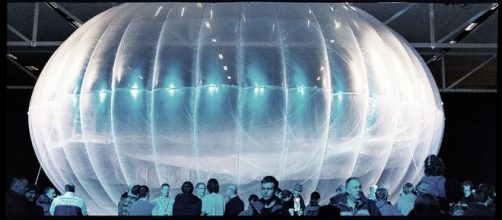The US Federal Communication Commission (FCC) has given the green light for Alphabet’s Project Loon to deliver an air balloon LTE to hurricane-affected areas. Alphabet, Google’s parent company, will bring Project Loon to restore internet connection and wireless services in Puerto Rico and the US Virgin Islands.
According to TechCrunch, the FCC has given the Alphabet-owned Project Loon an experimental license to help the people of Puerto Rico and US Virgin Islands regain connectivity. The FCC license, which extends from October 6 to April 6 of next year, was granted to Project Loon’s software engineer Ben Wojtowicz.
The Verge reported earlier that the purpose of the experimental or special temporary authority is to support licensed wireless carriers’ restoration of limited communication capability in some areas of Puerto Rico and the US Virgin Islands.
About Project Loon
First announced in June 2013, Project Loon is a research and development project first developed by Google X division, whose main goal was to provide internet access to remote areas and restore communication to disaster-affected regions.
The Alphabet's moonshot project uses high-flying helium-filled balloons, which are placed in the stratosphere at an altitude of about 18 km. The helium-powered balloon provides a high altitude wireless network with a 4G-LTE speed.
Alphabet claims that the great height, which refers to the stratosphere layer, is a big advantage because of its relatively low wind speeds (which is 5 to 20 mph).
The system uses directional antennas to beam internet signals to the ground stations or LTE-enabled devices. The entire system is based on LTE (Long-Term Evolution), a standard for high-speed wireless communication for mobile devices and data terminals.
The high-flying balloon can be maneuvered by adjusting their altitude in the stratosphere layer. Project Loon used data provided by the National Oceanic and Atmospheric Administration (NOAA) to get the balloon’s desired speed and direction.
Project Loon need to work with partner networks
According to The Verge, Project Loon will need to work with a partner telecom network to make it all work. In a statement given to tech site Engadget, an Alphabet spokesperson said that Project Loon needs to integrate with an existing telco network to deliver internet signals to people’s devices. The spokesperson also added that the high-flying balloon can't-do it alone.
This is not Project Loon’s first deployment outside the US. The Alphabet’s high-altitude balloon network has already been deployed and tested in some other parts of the globe. These include some places in Brazil, France, Indonesia, Sri Lanka, and New Zealand.
Alphabet, Google's parent company, is not the only US-based tech company working on efforts to help Puerto Rico and the US Virgin Islands.
The EV giant Tesla is also on the go, deploying hundreds of Tesla Powerwall battery systems to provide lighting and electricity to the disaster-affected areas. Additionally, Tesla also provides technical assistance to train people with the system installation and maintenance of the Powerwall battery systems.
In addition to Tesla, Facebook is also joining the ongoing effort to rebuild the island’s infrastructure, which was heavily damaged. Facebook has already sent its connectivity staff to help with the island’s ongoing reconstruction, TechCrunch reported.


